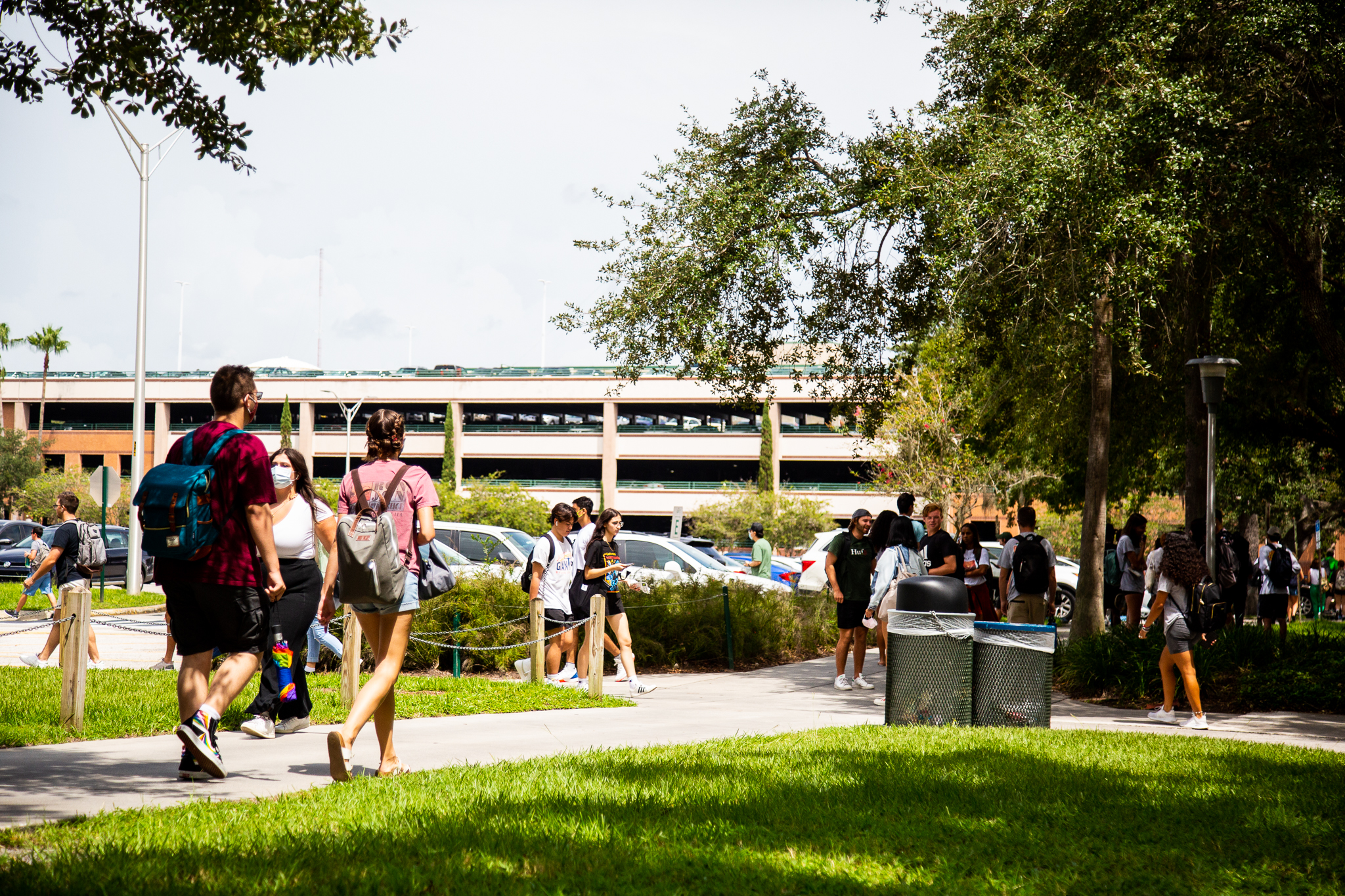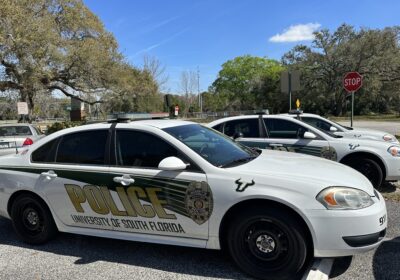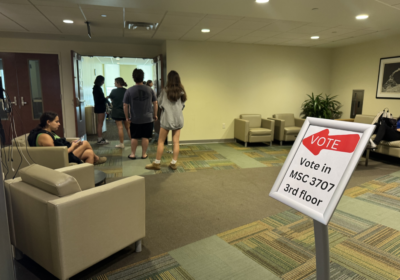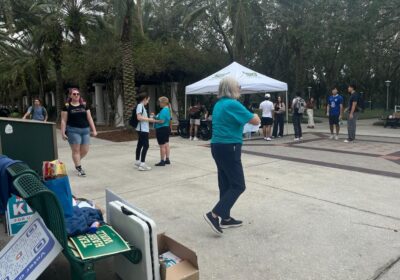Students show concern about on-campus shootings, safety measures

In light of the Nov. 13 shooting at the University of Virginia (UVA), some students feel as if there is a lack of awareness regarding safety measures at the university and state level.
The shooting at UVA resulted in the deaths of three students, according to CNN. The suspect, Christopher Darnell Jones, had also been the subject of a UVA Student Affairs investigation regarding his possession of a firearm and was convicted of a misdemeanor concealed weapons violation last year, according to CNN.
The shooting was not surprising given the high occurrences of school shootings in the U.S, according to freshman international studies major Ariana Kanlic. Though not shocking to her, Kanlic said it was still frightening to think about because she does not hear of something like that happening often at universities.
“That’s scary that it can still happen to us,” Kanlic said. “I thought ‘Oh, I’m out of high school, no more gun shooting drills,’ but clearly that’s not the case.”
Jordan Kirby, a sophomore criminology major, said the community has to make sure a shooting doesn’t happen at USF or anywhere else. One way to increase security around campus would be to install metal detectors, according to Kirby.
University Police (UP) is not in control of safety measures such as metal detectors, however, according to UP Public Information Representative Michael Lavelle.
Students also showed concern due to the lack of a well known public response plan in the case of a shooting from UP. Junior health science major Lizbeth Espinoza said not knowing what to do in the event of a shooting makes her feel uneasy.
“You should be keeping people in the loop so that they’re aware of the danger that certain people can cause and certain circumstances that they should avoid,” Espinoza said.
Lavelle said students and faculty looking to learn more about university’s guidelines for an active shooting should review the UP’s active threat website.
“We are committed to the safety and security of our community,” Lavelle said. “Through open communication, personal safety tips and crime prevention programs, the USF PD continuously engages students, faculty and staff on best practices to remain situationally aware and to stay safe.”
The website details a response checklist that gives faculty and students a possible course of action in case of an active shooter on campus. The list suggests that students secure an area by barricading doors and turning down lights and noise.
It also advises individuals on what information to report to the authorities as well as how to “un-secure” an area. Lastly, the checklist details the police response to the situation, which is to immediately isolate and engage assailants to prevent further harm.
Students are also encouraged to say something if they see something suspicious or unsafe, Lavelle said.
Florida’s gun policies are also aggravating the problem, according to some students. Regulations around gun sales, such as doing background checks, psychological evaluations and raising the age limit, must be implemented, Kirby said.
The state’s “relaxed gun laws” require that prospective gun owners be 21 years or older, cannot be a convicted felon and must be a U.S. citizen, according to The Hoffman Firm.
Other restrictions include background checks, limits on how many weapons can be bought at a time and a waiting period of three days. Florida, however, does not require a permit to buy a firearm.
Rayne Jenkins, a junior global business major, said it can be hard to have faith in government agencies to deal with gun violence especially due to the response at the school shooting in Uvalde, Texas. Uvalde police officers waited over 70 minutes to enter the classroom to confront the gunman, according to NPR.
Jenkins, who is a mother, said it was “insane” to think about children’s backpacks that now have safety paddings in case of a school shooting. Regulations must be tightened to keep people safe, she said.
In 2020, guns were the leading cause of death among children in the U.S., according to the Kaiser Family Foundation. Gun-related deaths account for 20% of all child deaths in the U.S., whereas other nations had an average of less than 2%.
This year there have been 147 mass shootings in Florida, according to the World Population Review.
Being a mother brings a new sense of stress when dropping off her children at school, Jenkins said.
“I actually have children that go to school and it causes too much stress to think about,” Jenkins said. “But thinking about it and the sense of other people’s children, even adult children, is very sad and stressful.”
Pierce Piazza, a sophomore elementary education major, said arming trained teachers could also be a solution to mass shootings. People will find ways to acquire firearms anyways so arming trained individuals could prevent further deaths, Piazza said.
“If we want to balance both sides, just designate one person that’s a veteran or wants to train to hold a weapon, because it’s better than just being sitting ducks in a school where somebody is trying to kill everybody,” Piazza said.
According to Jenkins, communication is necessary to stay safe in an active shooter situation. She said UP should sit down with people and listen to concerns in order to adjust policies as needed.
UP also offers active threat training, which provides “valuable information” and “response techniques,” according to the department’s website.
“There’s always that 1% chance where something like that could happen. So, it’s always in the back of my mind,” Kirby said. “Everybody thinks ‘Oh, it’s not gonna happen, it’s not gonna happen’ and then it happens.”







